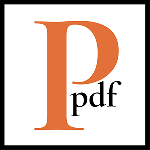Reviews
Environmental factors in polymyalgia rheumatica and giant cell arteritis
E. Hysa1, E. Mantello2, E. Gotelli3, R. Campitiello4, C.A. Cutolo5, E.L. Matteson6
- Laboratory of Experimental Rheumatology and Academic Division of Clinical Rheumatology, Department of Internal Medicine (DiMI), University of Genova, and Department of Experimental Medicine (DIMES), University of Genova, Italy. elvis.hysa@edu.unige.it
- Academic Rheumatology Centre, MFRU and Dipartimento Scienze Cliniche e Biologiche, Università degli Studi di Torino, Italy.
- Laboratory of Experimental Rheumatology and Academic Division of Clinical Rheumatology, Department of Internal Medicine (DiMI), University of Genova, Italy.
- Laboratory of Experimental Rheumatology and Academic Division of Clinical Rheumatology, Department of Internal Medicine (DiMI), University of Genova, and IRCCS San Martino Polyclinic Hospital, Genoa, Italy.
- IRCCS San Martino Polyclinic Hospital, Genova, and Ophthalmology Clinic DiNOGMI, University of Genova, Italy.
- Division of Rheumatology, Mayo Clinic College of Medicine and Science, Rochester, MN, USA.
CER10
2025 Vol.2, N°1
PI 0001, PF 0010
Reviews
Received: 23/12/2024
Accepted : 10/02/2025
In Press: 26/02/2025
Published: 30/07/2025
Abstract
OBJECTIVES:
Polymyalgia rheumatica (PMR) and giant cell arteritis (GCA) are closely inter-related inflammatory conditions predominantly affecting individuals over 50 years of age. A significant geographic and demographic variability, with higher incidence rates in Caucasian patients of Northern European ancestry has been reported for both. Genetic predisposition, epigenetic alterations, immune system senescence, age-related changes of hypothalamic-pituitary-adrenal axis function, and environmental factors are theorised to influence disease susceptibility in PMR and GCA.
METHODS:
This narrative review synthesises the current evidence regarding environmental factors implicated in the pathogenesis of PMR and GCA. Relevant keywords, including “polymyalgia rheumatica”, “giant cell arteritis”, “environment”, “gene-environment interaction”, “precipitating factors” were used to search PubMed and Scopus databases.
RESULTS:
Immunogenic bacterial and viral infections with respiratory and neurotropic affinity, ultraviolet (UV) radiation, vitamin D deficiency, air pollution and cigarette smoking have been considered as trigger factors of PMR/GCA although with mixed results. Seasonal variations have been inconsistently linked to disease onset, with hypotheses ranging from infectious outbreaks in winter to UV-induced vascular inflammation in summer. Air pollution, particularly particulate matter (PM10), has been associated with increased GCA incidence, potentially through inflammatory amplification in predisposed individuals. Recent emerging evidence also implicates vaccines and immune checkpoint inhibitors as triggers for PMR and GCA-like syndromes, potentially through mechanisms of heightened immune activation.
CONCLUSIONS:
The interplay between genetic and environmental factors, including possible epigenetic effects, highlights the complex immune pathophysiology of PMR and GCA. While some progress has been made in identifying triggers, many mechanisms remain unclear. Further research is necessary to elucidate causative pathways and early steps potentially informing preventive strategies.

